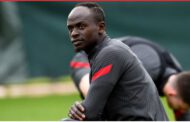Back in 2002, one of the biggest criticisms that the late Shuaibu Amodu faced, from media and especially from senior coaches like Adegboyega Onigbinde, was that Nigerian football was losing its identity – the wing play.
Amodu argued that he fashioned his tactics to suit the skillset of the personnel at his disposal, and reportedly tossed a piece of paper sent to him at halftime by Onigbinde into the trash.
In the turmoil that followed, including Nigeria’s third-placed finish at the African Cup of Nations, Amodu and his coaching staff (which included the late Stephen Keshi) were axed in a massive cull that also claimed a host of core, senior players.
Onigbinde was installed in his place, and promptly made it clear that ‘wing play’ would form the basis of his tactics.
“We have fast players who should move down the flanks and cross the ball for the forwards to score,” Onigbinde told the Independent. “It is a simple system that has worked for us in the past and we started having problems when we abandoned it.
“I am a strong believer of wing play.”
One part of his statement was true.
Nigeria did indeed have quick players, especially at that time. Pius Ikedia, Julius Aghahowa, John Utaka and Joseph Yobo being some examples.
What they did not have, were players who could cross a football. At least not with the quality to trouble world-class opposition.
Of that lot, Yobo – then playing as a right back – was the only one who could deliver a decent cross.
And he duly did, when he found Aghahowa with an inch-perfect delivery for the Super Eagles’ only goal at the 2002 World Cup, against Sweden in a 2-1 defeat.
For a man who was such an apostle of wing play, Onigbinde only took two out-and-out wingers to the tournament; Ikedia and Femi Opabunmi. It was not entirely his fault, but Amodu had been right; it was a problem of personnel.
Nigeria, the country which had produced legendary generational wingers like Paul ‘Wonderboy’ Hamilton, Kunle Awesu, Baba Otu Mohammed, Felix ‘Owoblow’ Owolabi, Adokiye Amiesimaka, Sam Okpodu, James Etokebe, Finidi George and Emmanuel Amunike, was finding it hard to unearth wing talent.
For a country with a rich history of wide players, it was a sad commentary of decline, and, quite frankly, it was embarrassing.
Finidi was the last great true and pure winger Nigeria produced. Tijani Babangida could run rings round full-backs, but could not cross a football to save his life.
The less said about Ikedia on the wings the better, while Victor Ikpeba was pigeon-holed into the left wing for Nigeria but was truly a central striker
Even John Utaka, Garba Lawal and other unsuitable players have been put into the winger straitjacket to little success.
Amodu’s style was simply to deploy his players in either a diamond midfield, or one that constricted the midfield and snuffed the life of the opposition before swift counterstrikes found a goal or more. It yielded results, usually slim, but it was not easy on the eye.
Nigerians were not amused.
During his time at the helm, Samson Siasia – an advocate of open, attacking, gung-ho style football – played Obinna Nsofor, Chinedu Obasi and Osaze Odemwingie in the wide areas.
It was sometimes successful, and to his credit, his teams scored goals, but it was always awkward and never ever looked like a permanent solution.
As 4-4-2 becomes more and more of an antiquated system, wingers are turning to a anachronistic relic of a time gradually disappearing over the horizon.
In Nigeria, they are on the cusp of becoming extinct.
The country simply has not produced one true winger of quality in more than two decades, since Finidi and Amunike retired.
In 2018, Nigeria’s World Cup performance was revived dramatically when Gernot Rohr switched to three at the back.
To be fair, his team had played their best football in friendlies with the same system, but Nigerians are used to seeing a back four, and Rohr would most certainly have been pitchforked and hoisted up on his 3-5-2 petard if his team had lost that game playing the system.
If the listless way they did play is anything to go by, they would have been defeated.
Ironically, Rohr’s 3-5-2 system was first introduced to the Super Eagles in 1997 by Frenchman Philippe Troussier. The decision not only horrified fans and media, but got the players up in arms, and Troussier was eventually fired after a player revolt.
Instead, the Super Eagles stormed back to win against an Iceland team that England, Portugal, Argentina, even Croatia in qualifying have all laboured against in recent times.
The same system had them minutes away from a famous result against Argentina that would have seen them into the Last 16.
Like previous coaches before him, Rohr does not have the personnel to plump for wing play.
Ahmed Musa is quick and tricky, but he cannot cross a ball. He is better served, like he proved, playing centrally as he does for CSKA Moscow.
Alex Iwobi is more of a 10 than a 7 or 11, while Victor Moses excels as a wing-back, or wide forward who prefers to cut in rather than deliver a cross.
Moses Simon, who missed the World Cup due to injury, also likes to pinch in, as does Henry Onyekuru.
As it stands, and with the utensils in his Super Eagles toolbox and conveyor belt, any tactical approach by Nigeria that involves stretching the play will have to be one that uses the wing-backs; Moses, Abdullahi Shehu, Tyronne Ebuehi, Brian Idowu and others.
At the moment, Russia 2018 has all but confirmed that ‘wing play’, at least in the sense that Nigerians know and understand it, is well and truly dead.














